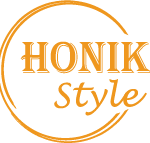“Location, location, location.” This time-honored business adage underscores the critical importance of site selection for a store’s success. A store’s address is not merely a place of operation—it is a key determinant of foot traffic, brand visibility, and revenue potential.
Unfortunately, many entrepreneurs focus intensely on their products and services while overlooking the strategic significance of location, ultimately seeing their efforts dissolve like bubbles. So, how can new business owners identify the ideal golden location? Let HONIK Biz walk you through the essentials!
Analyzing Location Characteristics and Target Customer Base
Hong Kong comprises 18 administrative districts, each with its own unique charm and character, magnetically attracting specific customer segments that align with its vibe. Therefore, to ensure a thriving business, it is crucial to clearly define your target audience and analyze their consumption habits before selecting a site. For example:
Residential areas (e.g., Taikoo Shing, Whampoa): The primary customer base consists of residents, with peak foot traffic during morning and evening commute hours. These areas are suitable for businesses catering to daily needs, such as convenience stores, laundromats, and breakfast shops, seamlessly integrating into residents’ routines.
Commercial districts (e.g., Central, Admiralty): These areas are dominated by office workers, with lunch hours and after-work periods being the busiest. Fast-food outlets, light refreshment shops, and cafés thrive here by meeting the needs of professionals seeking quick meals and short breaks.
Tourist areas (e.g., Tsim Sha Tsui, The Peak): These locations attract mainly tourists, with dense crowds during holidays and festive seasons. Souvenir shops, specialty restaurants, and gift stores have strong growth potential here, capitalizing on tourist spending.
Additionally, the accessibility of a store is paramount, especially for the food and beverage industry. Key considerations include proximity to MTR stations or bus stops, availability of parking facilities, and whether the location is on a main road or in an inner street. A store situated right next to an MTR exit can not only ensure steady foot traffic but may also reduce operational pressures, though rental costs in such areas are typically higher.
Leveraging Clustering Effects to Attract Potential Customers
The old saying “Business rivals are like enemies” may not hold true in Hong Kong’s commercial landscape. Instead, “forming a business cluster” often serves as the key to unlocking customer flow. For instance, Mong Kok hosts numerous affordable restaurants, benefiting from stable foot traffic and a concentration of customers with similar consumption habits, which helps these establishments quickly attract their target audience.
Beyond this, clustering offers three major advantages:
Built-in target audience: Stores located within an industrial cluster can rapidly reach potential customers. For example, consumers looking for electronics tend to prioritize Sham Shui Po, while those seeking creative and cultural products often head to PMQ.
Shared marketing costs: When an area achieves a relatively high level of recognition, stores within it benefit from a shared flow of customers. This reduces reliance on independent marketing efforts to attract foot traffic, thereby lowering financial and resource investments in promotion.
Impulse buying stimulation: Factors such as environmental ambiance, herd mentality, convenience, immediacy, and social interactions can encourage additional spending, increasing purchase opportunities.
It is important to note, however, that if a store’s offerings are too similar to those of neighboring businesses, it may struggle to stand out. For example, opening a new bubble tea brand in an area already saturated with similar stores requires a differentiation strategy—whether through unique flavors, pricing tactics, or interior design—to establish a distinct market position.
Is Vehicular Traffic an Opportunity or an Obstacle?
While locations with heavy vehicular traffic offer exposure advantages, they may fail to convert into actual foot traffic if customers cannot stop easily. For instance, in industrial areas like Kwun Tong, high traffic volume does not necessarily translate into customers if parking is prohibited near the store, deterring drivers.
Generally, the key factors in converting vehicular traffic into foot traffic include:
Parking facilities: The availability of parking lots, metered spaces, or taxi stands can effectively attract driving customers.
Pedestrian accessibility: Is the store easily accessible from the main road? Are there crosswalks or footbridges? These factors influence customers’ willingness to visit.
Visual design: On high-speed roads, enhancing the prominence and simplicity of signage—using large fonts and bright colors—can capture drivers’ attention.
For takeaways and drive-through services, high vehicular traffic can actually be an advantage, provided that convenient “stop-and-go” routes are designed.
Conclusion
Store site selection is a decision-making process that blends art and science, requiring wisdom and insight to draft a precise location blueprint. Only by comprehensively considering location characteristics, target customer base, clustering effects, and transportation conditions can a business stand out in a competitive market and achieve long-term operational success.

